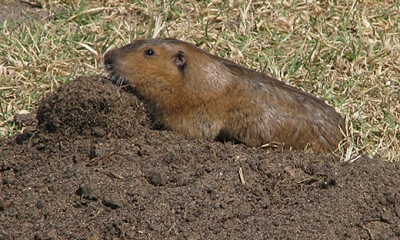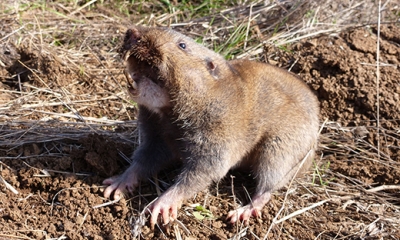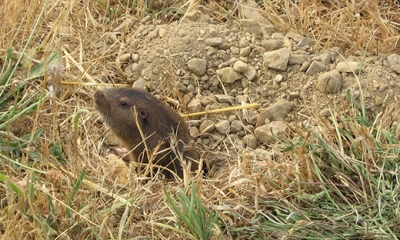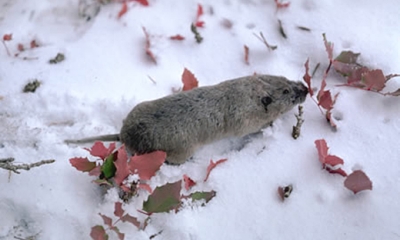
Pocket gophers
Pocket gophers are burrowing rodents named for their fur-lined cheek pockets.

Types of Pocket gophers
The Townsend's pocket gopher is a large pocket gopher. The pelage is dark buffy-gray to sooty gray on the dorsum and a rich buff on the venter; the face, nose and auricular patch are black; the feet are dirty gray; and the chin is white.
This gopher occurs along the Malheur and Owyhee river valleys in Malheur County and in southern Harney County. Townsend's pocket gophers have been found in alkaline soils along the south shore of Harney Lake and in deep fertile soils near Sod House School near the headquarters of the Malheur National Wildlife Refuge and in Stergen Meadows in the Pueblo Mountains of Harney County.

The Botta's pocket gopher tends to be dark rusty-ocherous on the dorsum and light buffy-ocherous on the venter; the nose is dusky and the feet and chin are white.
This pocket gopher is territorial; only during the breeding season can more than one individual be found in the same burrow system. Burrow systems do not cross each other, but spacing within and between burrow systems is remarkably uniform.
In Oregon, this gopher occurs as disjunct populations: one in Curry County only, the other in southwestern Klamath County, southern Jackson County, and western Josephine County, with an extension through central Douglas County to Cottage Grove, Lane County.
Photo by Stonebird, Flickr

The camas pocket gopher is the largest member of the genus, although large size is not a distinctive feature of the species. This gopher is a dark, sooty brown on the dorsum; the ears and nose are blackish. The venter is lead colored except for an irregular and variable-shaped patch of white on the throat. The winter pelage is long and furry; the summer pelage is short and coarse.
The camas pocket gopher is one of the most vicious animals known for its size. Nevertheless, these pocket gophers flee from potential predators whenever the opportunity arises. This pocket gopher produces chattering and grinding sound with its teeth, and crooning and purrs when males and females are put together. Young make twittering sounds.
This gopher is endemic to the Willamette Valley. Its geographic range matches almost exactly the extent that the Bretz Flood of 13,000 years ago inundated the Willamette Valley. The camas pocket gopher is associated with early seral plant communities or cultivated croplands that mimic early seral situations such as alfalfa, wheat and oat fields, filbert orchards and weedy lawns and waste-ground areas. In most occupied sites, soils are heavy clays.
Photo from Wikiwand

The Western pocket gopher is one of the two small pocket gophers in Oregon. Depending on the region, the pelage of this gopher ranges from pure black with purplish and greenish overtones to brown to hazel to yellowish hazel on the dorsom and from lead colored to buff to ocherous on the venter. The face is lead colored to black.
The Western pocket gopher constructs burrows beneath the surface with a vertical tunnel connecting deeper burrows that include the nest.
This gopher occurs from the Columbia River to the California-Oregon border in the Coast Range and along the coast. It also occurs in the Cascade Range, with eastward extensions to Mosier, Paulina Lake, and Merrill in Klamath County.
Photo by Lee Jaffee, Flickr

The Northern pocket gopher is the other small pocket gopher in Oregon. Its dorsal pelage ranges from a rich brown to a yellowish brown or buffy gray; the venter is lighter and usually washed with buff.
This gopher builds extensive burrow systems which consist of both near-surface and deep runways connected by a vertical shaft. The nest cavity is commonly situated in the deep runway with blind tunnels radiating from near the nest that are used for food storage and as a latrine.
The Northern pocket gopher occurs throughout Oregon east of the Cascade Range.

